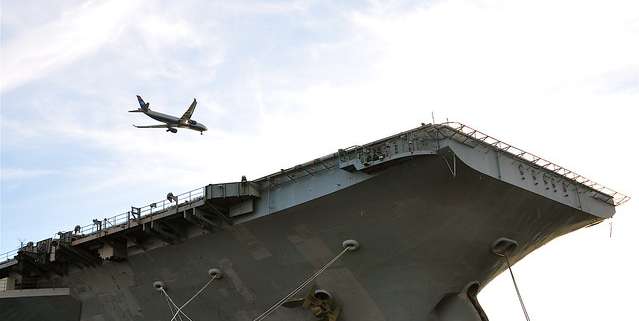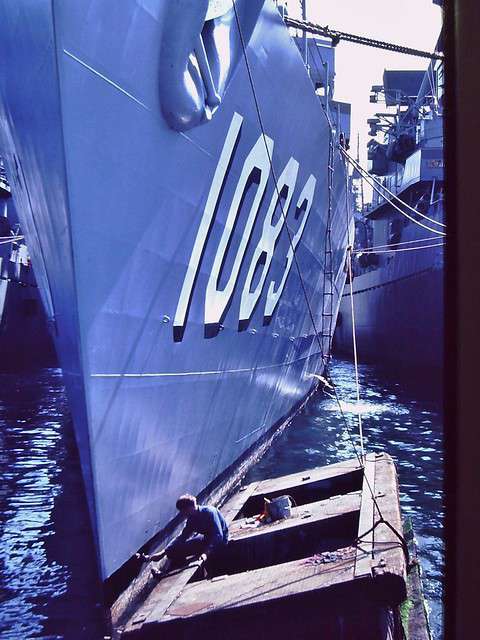
Harsh conditions require constant repainting of Naval ships with older paint formulas. Image Credit: Flickr User Kevin Burkett (CC by 2.0)
Same ship, different day. Adjusting the boom controls, Ryan rises 20 feet in the air to where he left off yesterday and begins to spray. Join the Navy, they said. Above him the curve of the hull and the broad, flat deck seemingly miles above overhangs him, blocking out the morning sun. He sprays a broad line, then adjusts his boom controls, then sprays another broad line. See the world, they said. He pauses to jam his earplugs deeper into his ear canals, but the dull vibrations from the thousands of workers involved in overhauling the aircraft carrier still pulse through his skull, heavying his thoughts. He turns his head to look down the length of the hull at all the steel yet to be painted. This would take weeks. If not months. I should have been a Marine, thinks Ryan, as he adjusts his boom controls and sprays another broad line of the same, dull, haze grey.
U.S. Navy Buys Large Volumes of Polysiloxane Paint
The U.S. Navy currently maintains around 430 active and reserve duty ships, including ten aircraft carriers. Each aircraft carrier takes 200,000 gallons1 or more of haze grey paint to cover. That’s 2 million gallons of paint used on aircraft carriers alone, if only one coat were to be applied. But even though the Navy has begun using high-tech polymer paint applications2 made of polysiloxane that last many times as long as older silicon alkyd paints, each ship must still be repainted on a consistent basis. The same holds true for the other 420 ships in the fleet, and any and all new ships currently under construction. This means that if you’re selling paint to the Navy, you’re selling a lot of paint.



